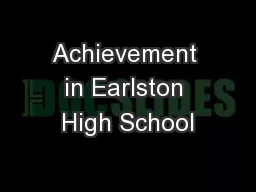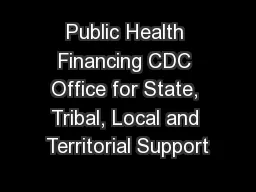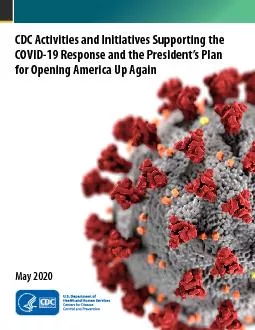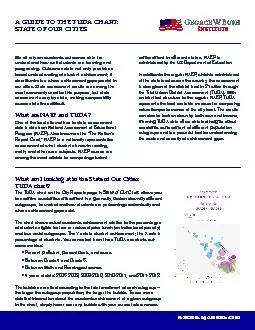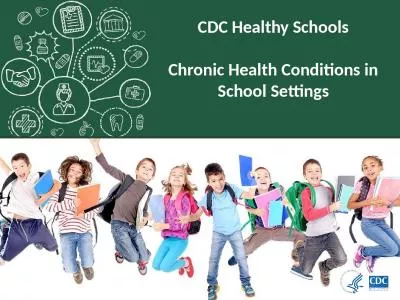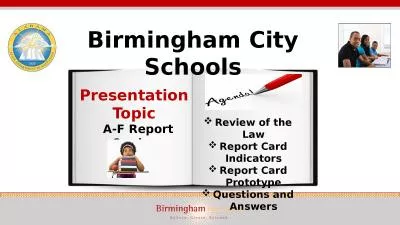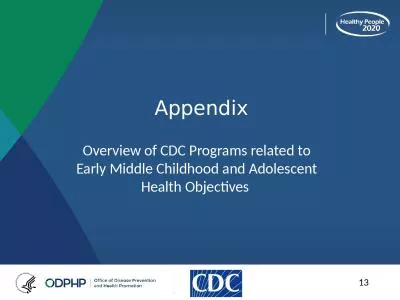PPT-CDC’s Investment to Support the Connection Between Health and Academic Achievement
Author : luanne-stotts | Published Date : 2018-11-08
Shannon Michael PhD MPH 1 Overview Explain the connection between health and academic achievement through the Whole School Whole Community Whole Child model Describe
Presentation Embed Code
Download Presentation
Download Presentation The PPT/PDF document "CDC’s Investment to Support the Connec..." is the property of its rightful owner. Permission is granted to download and print the materials on this website for personal, non-commercial use only, and to display it on your personal computer provided you do not modify the materials and that you retain all copyright notices contained in the materials. By downloading content from our website, you accept the terms of this agreement.
CDC’s Investment to Support the Connection Between Health and Academic Achievement: Transcript
Download Rules Of Document
"CDC’s Investment to Support the Connection Between Health and Academic Achievement"The content belongs to its owner. You may download and print it for personal use, without modification, and keep all copyright notices. By downloading, you agree to these terms.
Related Documents



